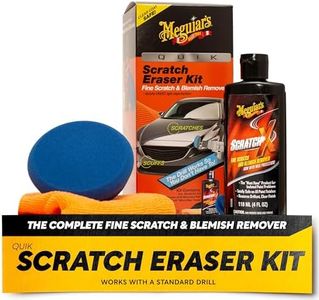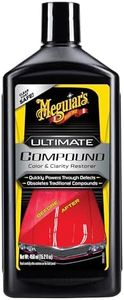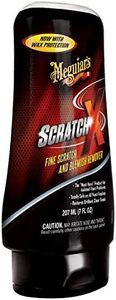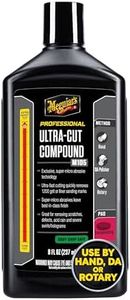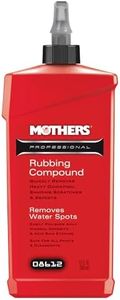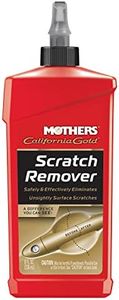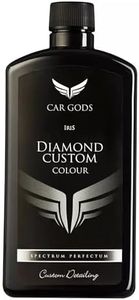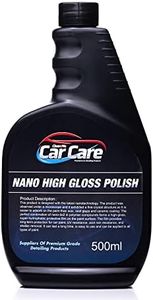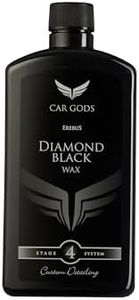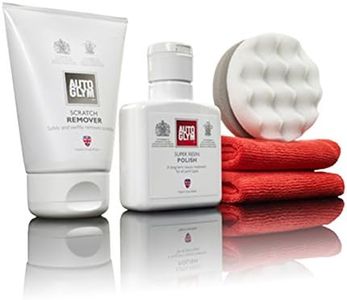We Use CookiesWe use cookies to enhance the security, performance,
functionality and for analytical and promotional activities. By continuing to browse this site you
are agreeing to our privacy policy
10 Best Car Scratch Removers
From leading brands and best sellers available on the web.Buying Guide for the Best Car Scratch Removers
Choosing a car scratch remover can feel overwhelming with so many options on the market, but breaking down the key product specs makes it much simpler. The best way to approach your decision is first to assess the type and severity of the scratches you want to treat. Light surface scratches and minor scuffs usually need a different solution than deeper, more pronounced scratches. Understanding how and where you plan to use the product—whether for quick touch-ups or periodic deeper treatments—will help you pick something that does the job efficiently and safely for your car’s paintwork.Type of Scratch RemoverCar scratch removers come in several forms, such as compounds, polishes, pens, and kits. Compounds are abrasive pastes that physically remove a thin layer of the paint, leveling out light to moderate scratches; pens are usually for very fine, shallow scratches, often using a clear liquid or resin. Kits may include both a remover and additional tools like applicator pads or microfiber cloths. If your main concern is minor, superficial scratches, something gentler like a pen or light polish is often sufficient. For more noticeable scratches, a compound or a full kit may be necessary.
AbrasivenessAbrasiveness refers to how much material the scratch remover takes off in the process of leveling the scratch. Products range from very mild (just enough for light scuffs and haze) to medium (for most surface-level scratches) to aggressive (for deeper marks—but these may require more skill and caution). If your car mainly has swirl marks or hairline scratches, opt for mild or medium abrasiveness. For deeper marks, you may need a more abrasive product, but always use with care to avoid harming your paint.
Paint CompatibilityIt’s important that a scratch remover is compatible with your car’s paint type and finish, such as clear coat, metallic, or older single-stage paint. Some products are formulated to work universally, while others may specifically mention compatibility with certain types. Check your car’s paint specifications (often found in the owner’s manual or online), and be sure the product you choose won’t cause hazing or discoloration.
Ease of ApplicationThis spec refers to how simple and user-friendly the scratch remover is to use, including details like whether it comes as a wipe-on, spray, liquid, or pen, and if it includes clear instructions or accessories. Some solutions require buffing by hand or with a machine, while others just wipe on and off. If you prefer a quick fix or are new to detailing, look for products with easy application methods, possibly including kits with all necessary tools. If you’re experienced and want professional-looking results, you might opt for more labor-intensive options.
Results and FinishDifferent scratch removers promise varying levels of results, from a high-gloss, restored finish to a simple reduction in scratch visibility. Some also add elements like UV protection or paint sealant to help prevent further damage. Think about your end goal—is it just hiding the scratch, or fully restoring the shine? Choose a remover that matches your expectations for appearance and additional paint care features.
Safety and Non-Toxic FormulasMany users are concerned about the chemical composition of auto-care products, especially if children or pets are nearby. Some scratch removers are formulated to be eco-friendly, non-toxic, or biodegradable. If safety or environmental impact matters to you, check for clear labeling and certifications supporting these claims.
